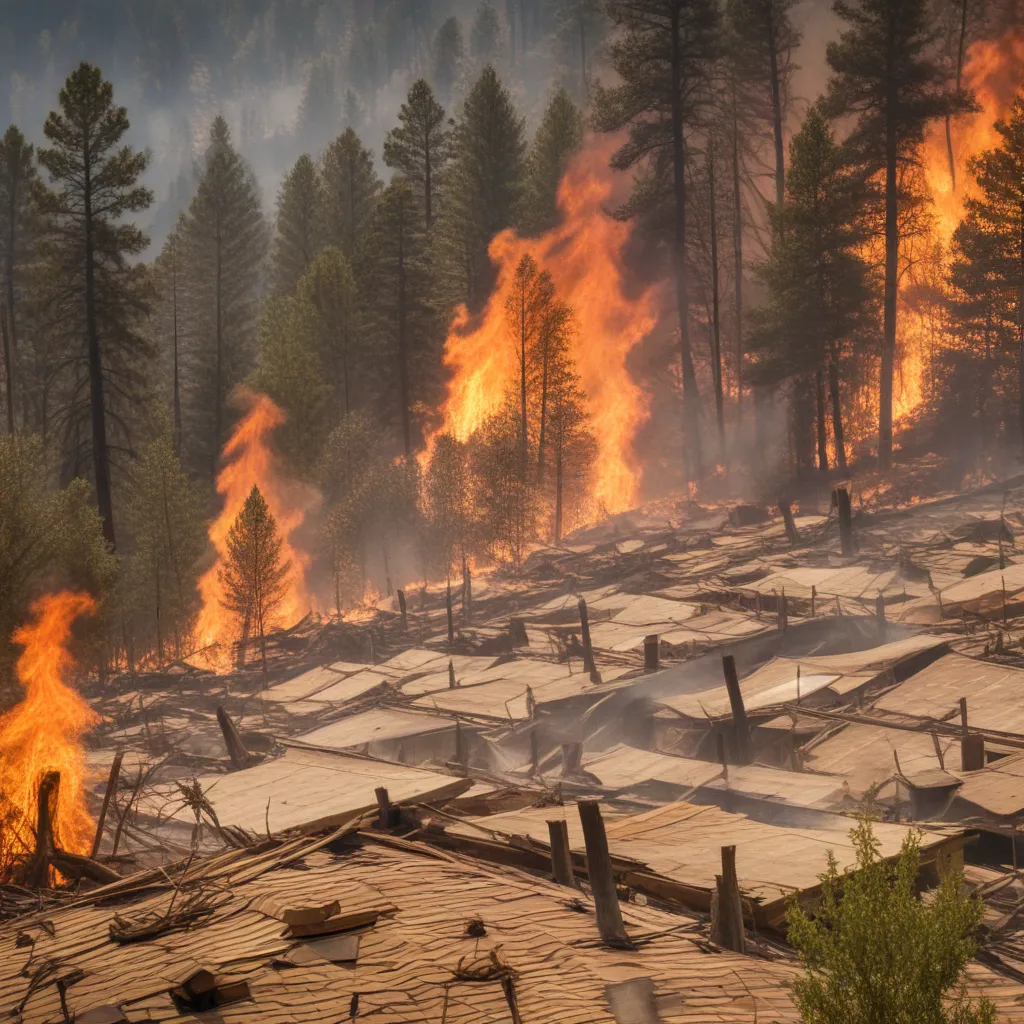
In the face of the increasingly devastating wildfires that have ravaged California in recent years, the importance of wildfire-resilient roofing has never been more apparent. As a roofing specialist, I understand that your roof is one of the most vulnerable areas of your home when it comes to fire risk. With its expansive surface area, a roof is highly susceptible to the impact of embers and direct flames.
But there are proactive measures you can take to fortify your roof and protect your home. In this comprehensive article, we’ll explore the key considerations for building wildfire-resistant roofs, from material selection and construction techniques to ongoing maintenance and retrofit strategies. Whether you’re constructing a new home or upgrading an existing roof, this guide will equip you with the knowledge to create a fire-safe haven in the face of California’s ever-present wildfire threat.
Wildfire Hazard Assessment
Before delving into roof-specific strategies, it’s crucial to understand the broader context of wildfire risk and mitigation. California’s diverse landscapes, coupled with the effects of climate change, have created an environment primed for devastating wildfires. Evaluating your property’s wildfire hazard is the first step in developing an effective protection plan.
Evaluating Wildfire Risk
Factors such as fuel load (the amount and type of vegetation), terrain, and weather patterns all contribute to a property’s vulnerability to wildfires. Homeowners can use online self-assessment tools or consult with local fire departments to determine their Fire Hazard Severity Zone (FHSZ) designation, which ranges from “Moderate” to “Very High.” This information is essential for understanding the specific risks your home faces and informing your roofing and landscaping choices.
Wildfire Mitigation Strategies
Protecting your home from wildfires requires a multifaceted approach. In addition to hardening your roof, you must also focus on creating defensible space around your property by managing vegetation and clearing combustible materials. Adhering to local building codes and fire-safety regulations is crucial, as many regions have adopted stricter standards to address the increasing wildfire threat.
Roof Design Considerations
When it comes to wildfire protection, your roof’s design and material selection play a critical role. Let’s explore the key factors to consider when choosing and constructing a fire-resistant roof.
Roof Material Selection
One of the most important decisions you’ll make is the choice of roofing material. Tile, metal, and composite roofing systems all offer varying levels of fire resistance, with tile and metal generally considered the most resilient options. These materials are less likely to ignite from embers or radiant heat, and they can better withstand direct flame exposure.
Roof Shape and Slope
The shape and slope of your roof can also impact its wildfire performance. Steeply pitched roofs with minimal overhang are less vulnerable to ember accumulation and radiant heat exposure. Conversely, low-slope or flat roofs are more prone to collecting combustible debris, increasing the risk of ignition.
Roof Ventilation Systems
Proper ventilation is crucial for maintaining the integrity of your roof assembly during a wildfire. Ensure that your roof vents, soffits, and other openings are protected with non-combustible mesh or other approved materials to prevent the intrusion of embers.
Roof Construction for Wildfire Protection
The way your roof is constructed can make all the difference in its ability to withstand a wildfire. Let’s delve into the key components of a wildfire-resistant roof assembly.
Roof Assembly Components
A well-designed roof system comprises several layers, each playing a vital role in fire protection. These include the roofing material, underlayment, roof deck, and framing. Selecting the right materials and ensuring proper installation are essential for creating a cohesive, fire-resilient barrier.
Roof Performance Criteria
When it comes to wildfire protection, roofing systems must meet specific performance criteria. Fire resistance rating, ember resistance, and radiant heat protection are all crucial factors to consider when choosing your roofing materials and assembly.
Roof Maintenance and Retrofitting
Even the most robust roof system requires ongoing care and attention to maintain its wildfire resilience. Regular inspections and timely repairs are essential for keeping your home safe.
Roof Inspection and Repairs
Homeowners should routinely inspect their roofs for signs of wear, damage, or potential vulnerabilities. This includes checking for loose or missing shingles, clogged gutters, and deteriorating sealants. Addressing these issues promptly can help prevent the entry of embers or the spread of flames.
Retrofitting Existing Roofs
If your home has an older, less fire-resistant roof, there are cost-effective retrofit options available. Roof coverings can be replaced, and additional underlayment can be added to enhance the overall fire performance of the assembly. Consulting with a roofing professional can help you identify the best upgrade strategies for your specific needs and budget.
Wildfire-Resilient Roof Systems
The roofing industry has been working tirelessly to develop innovative solutions that push the boundaries of wildfire protection. From advanced material technologies to integrated systems, let’s explore the cutting-edge developments in wildfire-resilient roof design.
Advanced Roof Technologies
Manufacturers are continuously introducing new roofing materials and systems engineered to withstand the extreme conditions of a wildfire. Metal roofing with specialized coatings, concrete and clay tiles, and impact-resistant composites are just a few examples of the latest advancements in fire-resistant roofing.
Roof Integration with Landscaping
The relationship between your roof and the surrounding landscape is crucial for comprehensive wildfire protection. Incorporating defensible space principles, such as strategic vegetation management and the use of non-combustible ground cover, can create a cohesive, fire-safe environment that complements your wildfire-resistant roof.
As a roofing specialist, I hope this article has provided you with a comprehensive understanding of the strategies and technologies available for building wildfire-resilient roofs in California. By prioritizing fire safety in your roof design, construction, and maintenance, you can take a significant step towards protecting your home and family from the devastating effects of wildfires. For more information or to explore our range of genuine roofing solutions, please visit Genuine Roof Systems.

























